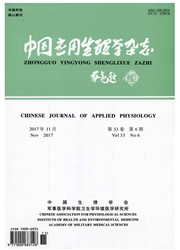

 中文摘要:
中文摘要:
目的:采用共聚焦显微镜快速二维扫描方式和线扫描方式记录心肌胞内钙瞬变,并分析其优缺点。方法:标本为急性分离的SD大鼠心肌单细胞,胞内钙信号由钙指示剂fluo4-AM标记,其变化由共聚显微镜(LSM510META系统)记录。钙瞬变由局部场刺激诱发,刺激器和共聚焦成像系统之间通过触发连接同步工作。结果:快速二维扫描方式可在二维平面上反映全细胞范围内钙瞬变的动态过程,空间信息较全面;特别地,当心肌细胞由于药物或病理状态的改变而出现胞内钙稳态失衡时,快速二维扫描的结果更有利于了解胞内钙变化;其结果可制成动画,真实而直观地再现心肌细胞胞内钙瞬变的动态过程。线扫描方式的时间分辨率较高,也有一定的空间分辨率,可反映钙瞬变的时空特征,并可分析细胞收缩的情况。二种扫描方式所得的结果在实质上是一致的,但各有其侧重点和优缺点,在反映心肌细胞功能状态方面具有互补作用。结论:两种扫描方式所得的结果综合起来更有利于对胞内钙信号变化的特征和意义进行正确解读。
 英文摘要:
英文摘要:
Aim: Fast 2-dimension scanning and line-scanning of confocal imaging were employed for measurement of cardiac Ca2+ transients, and the advantages and disadvantages about these two scannings were discussed. Methods: Single adult SD rat cardiac myocytes were made freshly and loaded with fluo4-AM. Intracdlular Ca2+ was imaging by the LSM510 META system. The Ca2+ transients were evoked by electrical field stimulation from an electronic stimulator which was triggered to work synchronically with the confocal imaging system. Results: Fast 2-dimension scanning showed the global Ca2+ signal clearly, which would be more helpful especially in monitoring a cell of Ca2+ overload or in other pathological conditions. And the images could be packaged into a vivid animation, which showed the process of Ca2+ transients and cell contraction visually and virtually. Line-seanning showed the Ca2+ transients in good temporal and spacial resolutions along the long axis of the cell. And the dynamic shortening of the cell length could be used for indicating the contraction of the cell. Data from line-scanning would be helpful for drawing some more exact conclusions. Conclusion: In general, fast 2-dimension scanning and line-scanning could work reciprocally to show a more perfect picture of the intracdlular Ca2 + transients in cardiac myocytes.
 同期刊论文项目
同期刊论文项目
 同项目期刊论文
同项目期刊论文
 期刊信息
期刊信息
